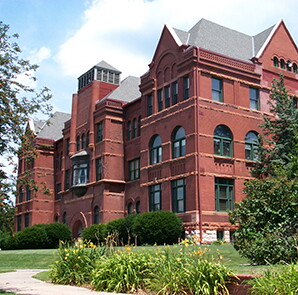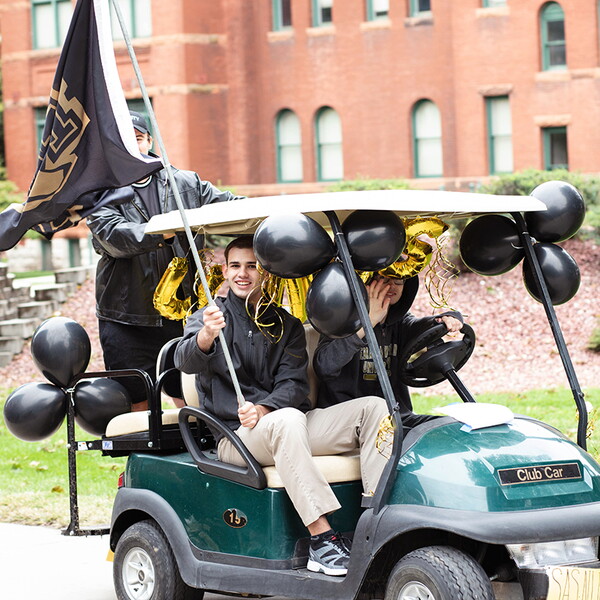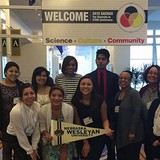They’re playing in the trees. They’re staring at students who walk right by them on the sidewalks. They’re chasing each other around Old Main. Squirrels have been a campus fixture for years.
Now 35 students in the new Introduction to Biological Inquiry class are turning to the campus squirrels for some insight on wildlife habits.
“As I deliberated what topic I would use in my section of the course, I lamented the fact it’s challenging to expose our students to field biology in the city,” said Cody Arenz, associate professor of biology. “It dawned on me, while it’s not a wilderness, our campus has squirrels that are wild animals.”
Since January, students have scattered the campus on early crisp mornings looking for squirrels that will provide some answers to their research.
During winter break, Arenz and Gary Gerald, associate professor of biology, collared 20 squirrels. The radio-collars allow the researcher to locate the squirrels using a receiver and antenna. Once the squirrels are located, many research questions can be answered like the animals’ home range sizes, activity times in comparison to human activity, population dynamics, and reactions to changes in seasons and food supply.
Arenz said the experience works well for the Introduction to Biological Inquiry class, which is designed to use a biological research area to teach students how science is done. Instead of labs where actions are formulaic and students merely follow a set of instructions, the course mentors students in a context of active learning, flipped classrooms, and real scientific research.
“The students are working in pairs and designing their own independent research project they can test on the squirrels,” said Arenz. “They will be mentored by the professor and eventually write a research proposal describing how they will be able to answer their research question.”
Cicely Batie, a senior global studies and German major from Lexington, appreciates the opportunity to conduct real research on campus.
“It’s a great fit for me since I’m not a biology major, and it gives me a glimpse into the world that our Biology Department engages in,” she said.
Senior biology major Katherine Ternent is assisting the class while conducting her own research on the campus squirrels.
“I’m studying how squirrel behavior, specifically home range changes in reaction to small-scale human activity,” she said.
Ternent will present her research at the Nebraska Academy of Sciences Annual Meeting in June. Meanwhile students in the inquiry class will share their findings at the annual NWU Student Symposium on May 6.
And the research won’t stop there.
“I hope to keep studying the campus squirrels for years to come,” said Arenz.

















